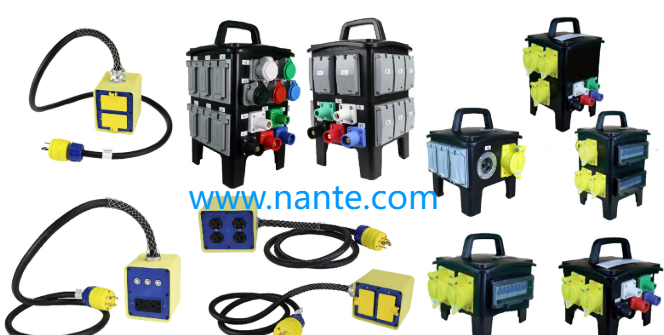Nante Spare Parts Planning For Portable Distribution Box Preventive Care

On busy sites where power must move with the crew, choosing the right Portable Distribution Box makes routine work safer and simpler. A compact distribution enclosure lets technicians stage feeds, protect circuits, and restore service quickly when events disrupt normal flow. With weather patterns and demand cycles shifting, teams that respect basic maintenance habits keep operations steady and reduce the chance of surprise faults.
Begin with visual checks before each shift. Inspect covers and handles for secure fastening. Look for signs that seals no longer compress evenly or that fasteners show looseness. A quick walkaround finds mechanical wear and prevents moisture entry that leads to corrosion. When contacts stay dry and hardware remains tight, electrical paths behave predictably and crews face fewer interruptions.
Keep contact faces clean and free of deposits. Use manufacturer suggested cleaners and lint free wipes. Avoid abrasive solvents that strip protective platings. Light cleaning after dusty tasks preserves surface finish and reduces resistance at mating points. When connectors mate smoothly and locking elements engage fully heat related wear becomes less likely during extended use.
Pay attention to strain relief and cable routing. Gentle curves reduce conductor stress where cables enter the housing. Secure runs prevent chafing against sharp edges and stop tug forces from pulling terminals loose. Anchoring clamps and protective sleeves at entry points turn a temporary setup into a robust feed with lower chance of accidental disconnection or insulation damage.
Monitor seals and gaskets on a schedule. Elastomer components react to repeated cycles and to sun and chemicals. Replace items that feel brittle or that leave gaps when doors close. Simple gasket swaps restore weather tightness without major downtime. Suppliers that stock replacement kits make routine care faster and let teams keep units in service while parts arrive.
Check internal fuses and mechanical interlocks. Confirm mechanical actions travel freely and that visual indicators show clear status. When lockout procedures require isolation, ensure that labels remain legible and that grounding steps are practical for on site use. Clear procedural guidance empowers crews to perform safe interventions without improvisation.
Keep spares and tools within reach. A modest cache of common items cuts repair time when wear appears. Springs contacts and gaskets are typical consumables that save a trip to procurement when stocked. Organize the cache with labeled compartments and a simple log to record usage so replacements happen before inventory dips below safe levels.
Training reduces avoidable damage. Short demonstrations on correct mating angles safe removal and how to spot early discoloration equip operators to protect hardware. Encourage careful handling rather than brute force. When teams follow consistent practice connectors remain reliable through demanding cycles and maintenance becomes predictable rather than reactive.
Consider environmental protections for sites exposed to sun or salt air. Protective covers and corrosion resistant coatings lengthen life and lower cleaning frequency. Where conditions remain harsh choose finishes that tolerate gentle washing without degrading so inspections remain meaningful and sealing stays dependable.
Adopt simple monitoring wherever possible. Visual temperature markers and basic load indication panels provide early notice of abnormal conditions. Alerts let technicians schedule checks during quieter times instead of chasing faults during critical activities. When visibility into system behavior is available in real time teams act before a minor trend becomes a major disruption.
Finally, rely on trusted documentation. Installation notes and parts lists clarify which components match a unit and which actions preserve warranty conditions. Manufacturers that publish clear maintenance guidance help teams plan rhythms of care that suit site realities and activity patterns.
For those who manage mobile power setups a steady routine of inspection cleaning and timely part replacement turns portable gear into dependable infrastructure. If you would like to review models accessory kits and replacement parts for mobile distribution equipment consult the supplier site at www.nante.com where product pages and technical notes can guide selection and upkeep. Reach out for tailored advice so your equipment stays safe reliable and ready when crews need it.
- Art
- Causes
- Crafts
- Dance
- Drinks
- Film
- Fitness
- Food
- Games
- Gardening
- Health
- Home
- Literature
- Music
- Networking
- Other
- Party
- Religion
- Shopping
- Sports
- Theater
- Wellness
